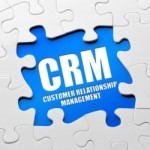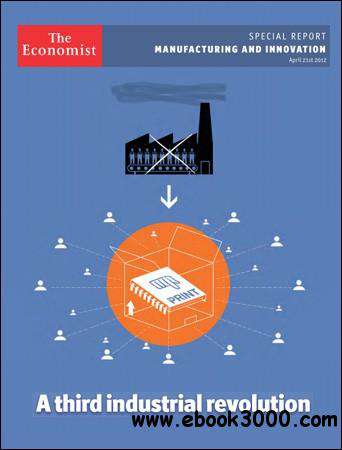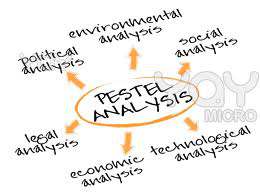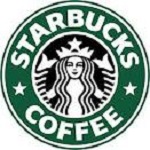Posts by John Dudovskiy

The term of ‘viral marketing’ has been coined by Steve Jurvetson in 1997 and it can be defined as “any marketing activity that accelerates and amplifies word of mouth in the digital domain” (Kirby, 2012, p.8). Alternatively, the following definitions of viral marketing have been proposed: “a marketing tactic relying upon the some aspects of the system to cause the promotion to propagate itself as initial targets pass the promotion onto others” (Investowords, 2013) “a process of encouraging honest communication among consumer networks” (Sickels, 2008, p.48) “any strategy that encourages subscribers to pass on marketing messages, thus creating the potential for exponential growth in the message’s exposure and influence” (Frith and Mueller, 2010, p.237) “an idea that spreads, and an idea that while it is spreading actually helps market your business or cause” (Godin, 2008, online). The rationale behind the wording of the term ‘viral marketing’ has been explained in a way that “the effects of this form of marketing is like a virus – one person does it, then another and another until the word has spread across entire communities” (Frith and Mueller, 2010, p.237). Practical advantages offered by viral marketing have been found to include lower expenses compared to many other marketing initiatives, possibility of reaching large numbers of customers during a short period of time, effectiveness because of the trust among members of a social group, and durability of viral marketing campaigns. Viral marketing campaigns often attempt to make an appeal to emotional aspects of consumers. This appeal can be based on a set of themes such as humour, compassion, motivation, achievement, sex and others. References Frith, K.T. & Mueller, B. (2010) “Advertising and Societies: Global Issues” Peter Lang Godin, S. (2008) “What is viral marketing?” Available at: www.sethgodin.typepad.com Kirby, J. (2012) “Viral…

Customer relationship management has been defined as “a business approach that integrates people, processes, and technology to maximise relationships with customers” Goldenberg (2008, p.3). Moreover, it has been stated that customer relationship management “characterises a management philosophy that is a complete orientation of the company toward existing and potential customer relationships” (Raab et al, 2008, p.6) Mueller (2010) characterises customer relationship management aspect of the business as a highly dynamic, and convincingly argues that businesses have to adopt a proactive approach in devising relevant programs and initiatives in order to remain competitive in their industries. Sinkovics and Ghauri (2009) relate the necessity for engaging in customer relationship management to high cost of direct sales, highly intensifying level of competition in the global level, and need for information about various aspects of the business in general, and consumer behaviour in particular, that can be used to increase the levels of sales. According to Peppers and Rogers (2011), there is global tendency in customer relationship management that relates to the shift from transactional model towards the relationship model. In other words, Peppers and Rogers (2011) argue that satisfying customer needs as a result of on-time transaction is not sufficient today in order to ensure the long-term growth of the businesses. Instead, businesses have to strive to maintain long-term relationships with their customers in order to maintain flexibility to adopt their increasing expectations and thus achieving their life-long loyalty. Peppers and Rogers (2011) further stress that, businesses that refuses to acknowledge this tendency in the global marketplace would be risking their market share and growth prospects in the future. One of the most critical sources for the research is the book “Relationship Marketing and Customer Relationship Management” authored by Brink and Berndt (2009). The book offers an in-depth discussion of the concept of…

Generally, views on CSR are divided into two categories: narrow and broad (Crane and Matten, 2007). Narrow view considers the only objective for business entities to consist of profit maximisation. On the contrary, according to the supporters of the broad view to CSR apart from their primary objective of maximising profits businesses are also responsible towards the society and community in which they operate in terms of addressing possible negative implications of their business practices. Urip (2010) convincingly argues that the numbers of supporters of narrow view to CSR have sharply declined in recent years due to the increasing level of focus CSR related issues are attracting from various organisational stakeholders. Amao (2011) further expands this point and associates the penalties for neglecting CSR aspect of business practice with damage to brand image and customer goodwill, and consequent threat to company’s long-term growth. References Amao, O. (2011) “Corporate Social Responsibility, Human Rights and the Law: Multinational Corporations in Developing Countries” Taylor & Francis Crane, A & Matten, D, 2007, “Business Ethics” second edition, Oxford University Press, Oxford, UK Urip, S. (2010) “CSR Strategies: Corporate Social Responsibility for a Competitive Edge in Emerging Markets” John Wiley & Sons

According to Blowfield and Murray (2008, p.21), as taken from Carroll (1979), company CSR activities can be classified into the following four groups: Economic responsibility. The responsibility of private entities of offering products and services to the marketplace according to the needs of society in order to make a profit. Legal responsibility. Companies have to operate within the boundaries of law in order to achieve their aims and objectives. Ethical responsibility. Ethical responsibilities of businesses include the types of responsibilities that are important, but at the same time they are not covered by law e.g. fair-trade. Discretionary responsibilities. Company responsibilities in this form, like philanthropy initiatives are not necessarily expected by societies, but they are usually welcomed by societies and create positive image for the business. This classification is also known as Carrol’s Pyramid of CSR and is best illustrated on the following figure: Source: Global Integration Business Consultants (2011, online) Alternatively, CSR initiatives are classified by Kotler and Lee (2005) into six broad categories that can are illustrated on the following table: Type of CSR activity Descriptions Cause promotions Resources spent by companies to promote a specific cause that benefits society in many levels such as eliminating poverty or fighting against child abuse Cause –related marketing A marketing campaign initiated by a business that highlights positive correlation between the amount of sales for the business and the amount of contribution to support a specific cause. Corporate Social Marketing Businesses promoting social causes such as healthy eating, caring about parents, quit smoking etc. Corporate Philanthropy This form of CSR involves businesses donating money or products of the company in substantial amounts in order to support specific causes. Community volunteering Businesses engaging their employees to work in a community sector for a specified number of hours on a voluntary basis Socially…

Intensifying forces of economic globalisation have facilitated the shift of production from highly developed countries such as the US and European countries to emerging superpowers like China, India, and Vietnam during the last several decades (Jacques, 2012). However, there is an argument that a set of technological breakthroughs such as introduction of 3D printing may reverse this shift. This article represents a critical analysis of the boomerang effect of competitive advantage in manufacturing in relation to developed countries as discussed in The Economist Special Report entitled Manufacturing and Innovation: A Third Industrial Revolution by Paul Markillie (2012). The article starts with a brief discussion about the rise of China as a world’s largest manufacturer. This is followed by discussing the likelihood of boomerang effect, i.e. shift of production back to rich countries. Moreover, the article contains a discussion of an alternative scenario analysing the chances for China to retain its current manufacturing leadership position in the global scale. Rise of China as a World’s Largest Manufacturer Cheap costs of human resources are widely believed to be one of the main reasons behind the emergence of China as the largest manufacturer in the world. According to the US Bureau of Labour Statistics only several years ago the cost of labour in Chinese factories was as low as 64 cent per hour whereas, hourly pay rate in the US factories amounted to $21.11 (Businessweek Magazine, 2004). Accordingly, this vast difference in employee pay rates has motivated many multinational businesses based in the US and Europe to outsource and offshore their manufacturing to China in an attempt to gain cost advantages. Moreover, highly increasing level of effectiveness of human resources in China can be specified as another factor that has contributed to its status of the largest manufacturer in the world. It has been…

Strategy can be defined as “a method or plan chosen to bring about a desired future, such as achievement of a goal or solution to a problem” (Business Dictionary, 2013, online). Selection of an appropriate business strategy and its effective execution plays a critical role on long-term growth prospects of any business regardless of the industry and geographical location. This first part of the article represents an assessment of strategic options for Eurofreeze, a global manufacturer of frozen food. The article starts with specifying the current strategic position of Eurofreeze. This is followed by development and application of scoring criteria for Eurofreeze. The first part of the article is completed by formulation of strategic statement for specific strategic option that has been selected for Eurofreeze. The current strategic position of Eurofreeze involves market leadership in branded meat and fish dishes. This position has been achieved through effective utilisation of a range of company core competencies such as sophisticated freezer technology, regular development of new frozen dishes recipes, effective organisation of distribution channels and focus on own branded products. Moreover, compared to its main rival – Refrigor, Eurofreeze possesses additional competitive advantages such as leadership in European market and stronger brand name. Today massive changes are taking place in frozen food industry fuelled by further increasing bargaining power of large supermarkets, extension of supermarket own brand ranges of frozen food, and the desire of supermarkets to sell only one leading frozen food brand along with supermarket own brand products. In order to address these changes in an appropriate manner Eurofreeze has to select a strategy option from the following five broad options available: The first option for Eurofreeze involves stop selling branded frozen food, as well as, own label vegetables and fruit, but this is going to result in reduction in…

Activity-based costing system is “a technique of cost attribution to cost units on the basis of benefits received from indirect activities e.g. ordering, setting up, assuring quality” (CIMA, in Rajasekaran and Lalitha, 2011, p.272). In simple terms, in activity-based costing system overheads are assigned to specific activities with individual cost centres and cost activities clearly identified. The current costing system of Manac plc, absorption costing system can be explained as “a costing system wherein fixed manufacturing overhead is allocated to (or absorbed by) products being manufactured” (Accounting Coach, 2013, online). The main differences between the two costing systems relate to the role of overheads in accounting system, the types of cost drivers, and the allocations of costs. Advantages of Activity-Based Costing System for Manac plc There is a set of advantages to be obtained by Manac plc from replacing its current absorption costing system with activity-based costing system. First of all, by introducing activity-based costing system Manac plc management would be able to eliminate a range of activities that do not add value, consequently reducing the cost of product. Introduction of activity-based costing also provides Manac plc financial management the possibility of tracing the costs overheads with an increased level of accuracy and reliability. The value of this advantage can be explained in a way that the management would be able to explore the possibilities of reducing overhead costs to increase the levels of profit margins. Furthermore, by adopting activity-based costing system Manac plc financial management would be able to monitor the total life-cycles of all costs and identify and utilise the possibilities of their reduction. Activity-based costing system can also provide an effective linkage between Manac plc corporate strategy and decision making at an operational level. In other words, Manac plc managers would be able to analyse cost-life cycle…
By John Dudovskiy
Category: Finance

PESTEL stands for political, economical, social, technological, environmental, and legal factors affecting the business. The following table contains major factors within PESTEL analysis: Political Political stability in the UK Changes in US and UK ‘special relationships’ and their impact on multinational business Economical USD:GBR exchange rate Inflation rate in the USA and UK Rate of unemployment in the UK Macroeconomic changes in the UK Social Demographics shifts in the UK Changes in traditional work patterns Increasing level of multiculturalism amongst consumers Shifts in Consumer Values Technological Advent of innovative technology in catering industry Patenting issues associated with technology Environmental Environmental ‘green’ groups and the level of their influence on consumers Global warming, the issues of sustainability Legal Changes in UK rules and regulations in relation to corporate governance Business policies to be introduced by the EU Legal implications of the current tax row

Value network analysis can be applied in relation to Starbucks operations in the UK in order to “explore the structure of its interaction with several actors in a network of relationships” (Zsidisin and Ritchie, 2008, p.40). In simple terms, value network analysis can be specified as more sophisticated version of Porter’s Value Chain analysis in a way that the former framework explains the impact of each network group in a multidirectional manner. For example, as it is illustrated in the following figure, media as an important network group within Starbucks value network has direct implications on the performance of three other individual network groups: suppliers, company operated stores, and licensed stores. This specific interrelationship can not be effectively presented within Porter’s value chain network, due to the fact that this framework is constructed in a rigid and sequential manner. The following table briefly explains the nature of impact each individual network group within Starbucks value network Network group Comments Company operated stores The largest source of revenues from the sale of drink and food products Licensed stores Licensed stores contributed to 9% of total revenues during the financial year of 2011 (Annual Report, 2011). Suppliers This network group comprises suppliers of coffee beans, food products, and various tools and technologies.Suppliers are used by Starbucks for company operated stores, whereas, licensed stores deal with their suppliers in a direct manner. Farmer Support Centres are maintained in Rwanda, Costa Rica and other locations UK Government agencies UK government agencies as an independent network group can impact both, company operated stores, as well as, licensed stores Media Has great impact on the performance of both, company operated and licensed stores. Recently, this impact has been highly negative due to extensive coverage of tax issues from a critical viewpoint.Unlike other network groups, media…

Porter’s Five Forces analysis framework comprises five individual forces that shape the overall level of competition in the industry. These forces are threat of new entrants, threat of substitute products, bargaining power of buyers, bargaining power of suppliers, and the extent of rivalry among existing competitors Threat of new entrants to the industry depends on a range of factors such as the level of capital requirements, the extent of profitability of the industry, possible barriers to enter the industry etc. Threat of substitute products for the company depend on the level of standardisation of products, the level of depreciation, direct and indirect substitution and a range of other factors Bargaining power of buyers as a factor impacting the level of competition within an industry depend on the levels of switching costs for buyers, the extent of customer sensitivity to changes in prices, the nature of the product etc. Bargaining power of suppliers along a wide range of factors depend on the variety of substitute raw materials, the costs associated with changing the supplier, the type of supply-chain management and other factors Extent of rivalry among existing competitors depend on sustainability of competitive edge, the efficiency of advertising, the level of utilisation of critical success factors for the industry etc.
